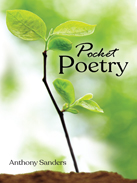
 |
imagination
and the brother of creation
So dream big and maybe
you can catch a nation"
Fittingly titled, this book is a collection of heartfelt poems that the readers can quickly digest while relishing the poet’s use of imagery and symbolism that consistently evokes emotions and paints an image in the reader’s mind. Sanders’ collection of musings and reflections do not necessarily adhere to any consistent poetic rhyme scheme or technique in most poems; nevertheless, the poet demonstrates a knack for using repetition as a means of emphasis and to get the reader’s attention. Notably, “I Can” uses the phrase repeatedly to motivate dreamers and, more importantly, encourages them to believe in their dreams. For the most part, as the poetry compilation progresses, the poems’ speaker is bold and unafraid to speak his mind. From introspective thoughts that range from mental health to spiritual poems about God, Sanders’ passion and authenticity shine clearly through the pages.
There is little doubt that the author has invested a piece of himself in his poems. In “Song,” the depth of the message that words and music last an eternity—even though the singer, composer, or writer does not—is powerful, and anyone who has ever written to feed their inner artist is likely to connect instantly. Interestingly, Sander’s poetry rarely dwells on despair and struggle, even when that is what the poem is about. Instead, he creatively disguises these themes within the umbrella of overcoming adversity, exemplified best in “Stand Tall.” Seemingly describing the hurting individual as “a broken lighthouse,” he cleverly shows how the lighthouse continues to shine with purpose despite its cracks, standing resilient through all that can be thrown at it.
In most cases, the poetry is extremely forthright and easy to understand for the layman, but the occasional outliers in Sander’s compilation make for memorable reading. In particular, Colorblind,” on the surface, just depicts a speaker reflecting on a life void of color. Digging deeper, however, a lack of color can have numerous interpretations, from breaking free of a purposeless, mundane life to being colorblind by treating humanity in the same manner regardless of color. In the same vein, “The world is true” shows complexity and understanding that is rare for someone entering the second decade of their lives. He suggests, candidly, that how one perceives the world is heavily predicated on the mind. Concepts like reality and truth are filtered through the lens of the mind and individualized based on how the brain has been conditioned through experiences.
Overall, Sanders’ has a strong handle of imagery, and he wields that ability seamlessly in poems like “Don’t be scared.” Despite only being three lines, the reader is left to his own devices as he conjures the image of a burning field, and the speaker simply, even hauntingly, watches instead of fleeing the inferno. The simplicity in Sanders’ poetry allows readers to kickstart their own creative, imaginative juices, which will ultimately render numerous visions and interpretations of the imagery portrayed in his poetry. The use of imagery and repetition is further emphasized in spiritual poems like “Letter God” and “God Said.”
In many ways, Sanders’ encourages his audience to battle and overcome their fear, a feeling that manifests itself in the form of hate, failure, rejection, etc. Using his own example, conveyed through the written word, he demonstrates what authenticity and being true to yourself look like. Undoubtedly, his intention is for readers to find their authentic selves so they, too, can experience that unfiltered exuberance and embrace their true identities. Tantalizingly simple yet profound in its own right, the author’s collection is a thought-provoking journey.